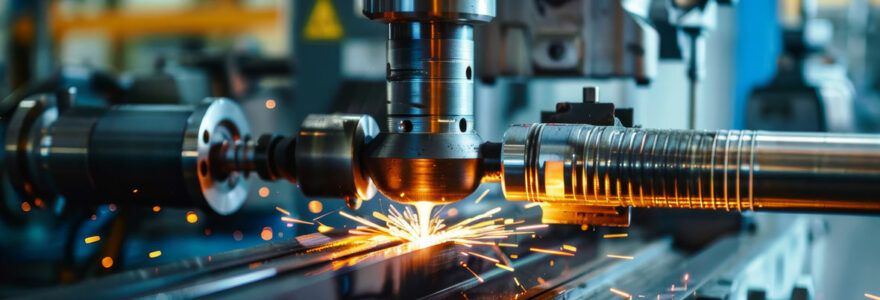Selecting the optimal friction stir welding machine demands careful consideration of several factors. From compatibility with various metal and polymer materials to the significance of machine power and control systems for precision welding, every detail plays a pivotal role. Additionally, the machine's size and portability could impact workshop flexibility. Further into the subject matter, understanding the effects of spindle speed, welding speed on joint properties, and the function of temperature control and cooling systems in fsw become significant. One mustn't overlook the automation features, which ensure consistent welding performance. Lastly, the tool material and design considerably influence weld strength and durability. Therefore, a comprehensive understanding of these aspects will guide towards making an informed decision.
Key factors to consider when choosing a friction stir welding machine
In the pursuit of finding the right friction stir welding Fsw machine, many significant factors are brought to the forefront. Compatibility with various metals and polymer materials is a primary consideration. The mechanical and thermal capabilities of FSW machines play a pivotal role in assuring optimal welding quality. Recognizing the need for specific tools for diverse FSW applications, from aluminum to high strength alloys, is equally significant.
Assessing compatibility with various metal and polymer materials
Compatibility is a major factor as the FSW machine needs to be able to handle both high and low strength materials. From soft aluminum to robust steel alloys, the machine must offer flexibility in welding parameters.
Importance of machine power and control systems for precision welding
Power and control systems are paramount for precision welding. The ability to adjust parameters like speed of rotation, tilt angle, and traverse speed can significantly affect the quality of the welds. Process control and programming also play a major role in the choice of a FSW machine.
Considering machine size and portability for workshop flexibility
Size and portability of the machine should not be overlooked. A machine that is easy to move around the workshop provides flexibility and increases productivity. Additionally, considerations should be given to customization options and upgrades to accommodate evolving production needs.
Lastly, it's essential to examine the manufacturer's reputation and the technical support they offer. Access to training and simulation models can be invaluable for a smooth and efficient operation. technology, as developed by TWI, is a perfect example of this.
Evaluating machine specifications for optimal weld quality and efficiency
Choosing the Right Friction Stir Welding Machine involves various factors, with a focus on the identification of key welding parameters. These parameters often include speed of rotation, tilt, and traverse speed. All these parameters play a significant role in determining the quality and efficiency of the weld. Comparing different friction welding technologies provides a broader understanding of the advantages and disadvantages according to materials and applications. Each welding process, whether high or low speed, requires specific tools and mechanical settings for optimal performance.
Understanding the impact of spindle speed and welding speed on joint properties
In the context of friction stir welding (FSW), the spindle speed and welding speed are essential parameters. The quality of the weld can be significantly impacted by these factors. Therefore, a thorough understanding of the relationship between these speeds and the joint properties is essential. Selecting the appropriate tools is equally important, as it directly affects the quality of the weld and the overall efficiency of the process.
Role of temperature control and cooling systems in FSW
Thermal management in friction welding is vital to prevent weld defects. Uncontrolled high temperatures can lead to mechanical failures, affecting the quality of the weld. Therefore, effective temperature control and cooling systems are crucial components of any friction welding machine. These systems not only improve the quality of the weld but also enhance the machine's efficiency.
Examining automation features for consistent welding performance
Automation features in welding machines contribute to a consistent welding performance. Systems of control and surveillance play a significant role in optimizing the welding process. They help maintain a stable environment, ensuring the quality of the weld remains consistent. Energy efficiency is another aspect that should be evaluated in friction stir welding machines. The impact of energy efficiency on operating costs and the environment is significant and cannot be overlooked.
The role of tool material and design in enhancing weld strength and durability
Recognizing the significance of tool material selection to optimize thermal resistance and longevity of welded joints is paramount in the field of Friction Stir Welding (FSW). The materials used, whether metal or polymers, directly influence the strength and durability of the joint. The design of the tool, which includes the shape of the pin and shoulder, greatly impact heat distribution and weld quality. It is an essential aspect in reducing friction forces and improving metal penetration.
Choosing specific tool alloys is beneficial to augment the mechanical strength and longevity of aluminum joints. New tool designs are constantly evaluated to minimize welding defects and optimize the thermally affected zone. Differences in tool materials used for welding polymers and metals highlight both the versatility and challenges associated. This information is not only derived from Google Scholar but also various trusted academic and educational platforms, renowned research institutes, and high-quality media sources.
